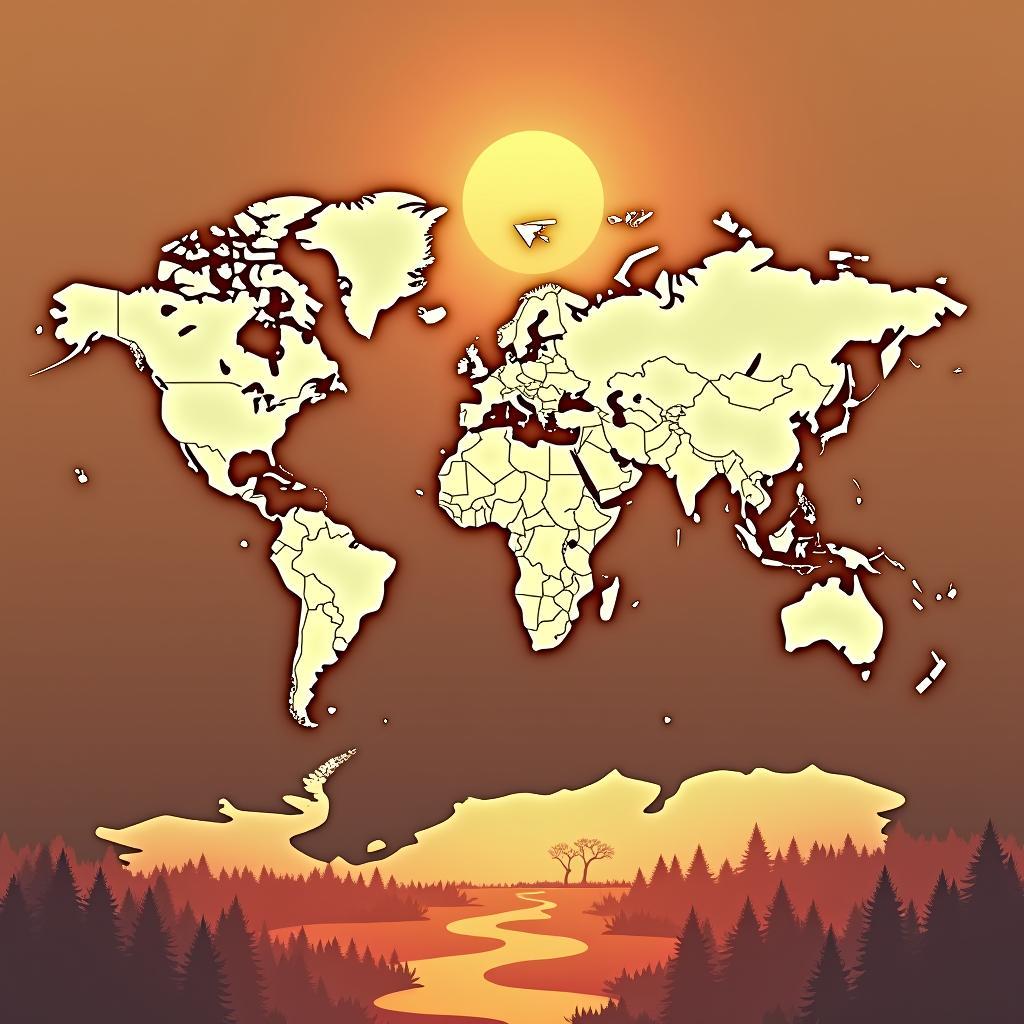The IELTS Reading test is a cornerstone for anyone preparing for the IELTS exam, consisting of various texts to assess reading skills effectively. A prevalent topic in recent IELTS examinations has been climate change and its impact on global weather extremes. This subject not only resonates with current events but also provides rich material for complex reading passages. Given the increasing frequency of natural disasters and extreme weather events, it is crucial to understand how climate change exacerbates these phenomena. The topic “How is climate change affecting global weather extremes?” has been featured multiple times, indicating its high likelihood of reappearing in future tests.
Sample Reading Test
Reading Passage: “How is Climate Change Affecting Global Weather Extremes?”
Climate change, primarily driven by human activities, significantly alters weather patterns across the globe. This transformation includes the increasing intensity and frequency of weather extremes such as hurricanes, heatwaves, floods, and droughts.
One of the most evident effects of climate change is the increase in global temperatures. Studies show that the Earth’s average surface temperature has risen by about 1 degree Celsius since the late 19th century, a change driven largely by increased carbon dioxide and other human-made emissions into the atmosphere. This temperature rise contributes to more frequent and severe heatwaves, affecting millions of people worldwide.

Furthermore, climate change impacts precipitation patterns, leading to more intense and irregular rainfall. Areas prone to heavy rainfall are experiencing even more significant downpours, while regions susceptible to droughts suffer more prolonged and severe dry spells. This dichotomy exacerbates water scarcity in some areas and increases the risk of floods in others.
Additionally, the warming atmosphere holds more moisture, fueling more intense and destructive hurricanes and typhoons. These storms bring devastating winds and heavy rains, causing catastrophic damage to infrastructure and ecosystems. The rising sea levels, another consequence of climate change, worsen storm surges, contributing to more severe coastal flooding.
Polar regions show the most pronounced signs of climate change, with Arctic sea ice diminishing at an alarming rate. This melting ice not only contributes to rising sea levels but also disrupts the habitats of various species. The loss of ice also affects global ocean currents, further altering weather patterns far beyond the polar regions.
The impacts of climate change on weather extremes underscore the urgent need for comprehensive mitigation and adaptation strategies. Reducing greenhouse gas emissions, investing in renewable energy, and enhancing disaster preparedness are essential steps to mitigate the adverse effects of climate change on global weather extremes.
Questions
Multiple Choice
- What is the primary driver of climate change according to the passage?
A. Natural volcanic activities
B. Human activities
C. Ocean currents
D. Solar radiation - What has been the approximate increase in the Earth’s average surface temperature since the late 19th century?
A. 0.5 degrees Celsius
B. 1 degree Celsius
C. 1.5 degrees Celsius
D. 2 degrees Celsius - How does climate change affect precipitation patterns?
A. It causes a decrease in precipitation globally.
B. It stabilizes regional rainfall patterns.
C. It leads to more intense and irregular precipitation.
D. It reduces the frequency of droughts.
True/False/Not Given
- The passage states that climate change only affects weather patterns in tropical regions.
- The warming atmosphere can hold more moisture which intensifies hurricanes and typhoons.
- Rising sea levels exacerbate storm surges, causing more severe coastal flooding.
Answer Key
Multiple Choice
- B – Human activities
- B – 1 degree Celsius
- C – It leads to more intense and irregular precipitation
True/False/Not Given
- False – The passage mentions various global impacts, including polar regions.
- True – The passage states that a warming atmosphere holds more moisture, fueling more intense hurricanes and typhoons.
- True – The passage notes that rising sea levels worsen storm surges, leading to severe coastal flooding.
Lessons Learned
Common Mistakes
- Misinterpreting Data: Many test-takers confuse the numerical data presented.
- Overlooking Keywords: Essential hints are often missed, such as “increasing severity” or “prolonged dry spells.”
- Ignoring Context: Failing to grasp the overall context by isolating sentences can lead to incorrect answers.
Vocabulary
- Dichotomy (n) /daɪˈkɑːtəmi/: sự đối lập -> the dichotomy of water scarcity vs. flooding.
- Mitigation (n) /ˌmɪtɪˈɡeɪʃn/: sự giảm thiểu -> mitigation of adverse effects.
- Adaptation (n) /ˌædæpˈteɪʃn/: sự thích ứng -> adaptation strategies.
Grammar Points
- Present Perfect Tense: Used to describe changes over time (“has risen by about 1 degree Celsius”) – Useful for explaining ongoing processes.
- Comparatives and Superlatives: Important for describing degrees of change (“more intense,” “most evident”).
Tips for Scoring High in Reading
- Practice Regularly: It’s vital to practice reading passages from various sources.
- Expand Vocabulary: Enhance your word bank with academic and topic-specific terms.
- Understand Question Types: Familiarize yourself with different question formats to improve accuracy.
- Time Management: Allocate your time wisely, ensuring you have enough time to review and check answers.
- Critical Reading: Develop critical reading skills to analyze and decipher complex texts accurately.
By following these tips and understanding the impacts of climate change on global weather extremes, you can better prepare for your IELTS Reading test and achieve a higher score.